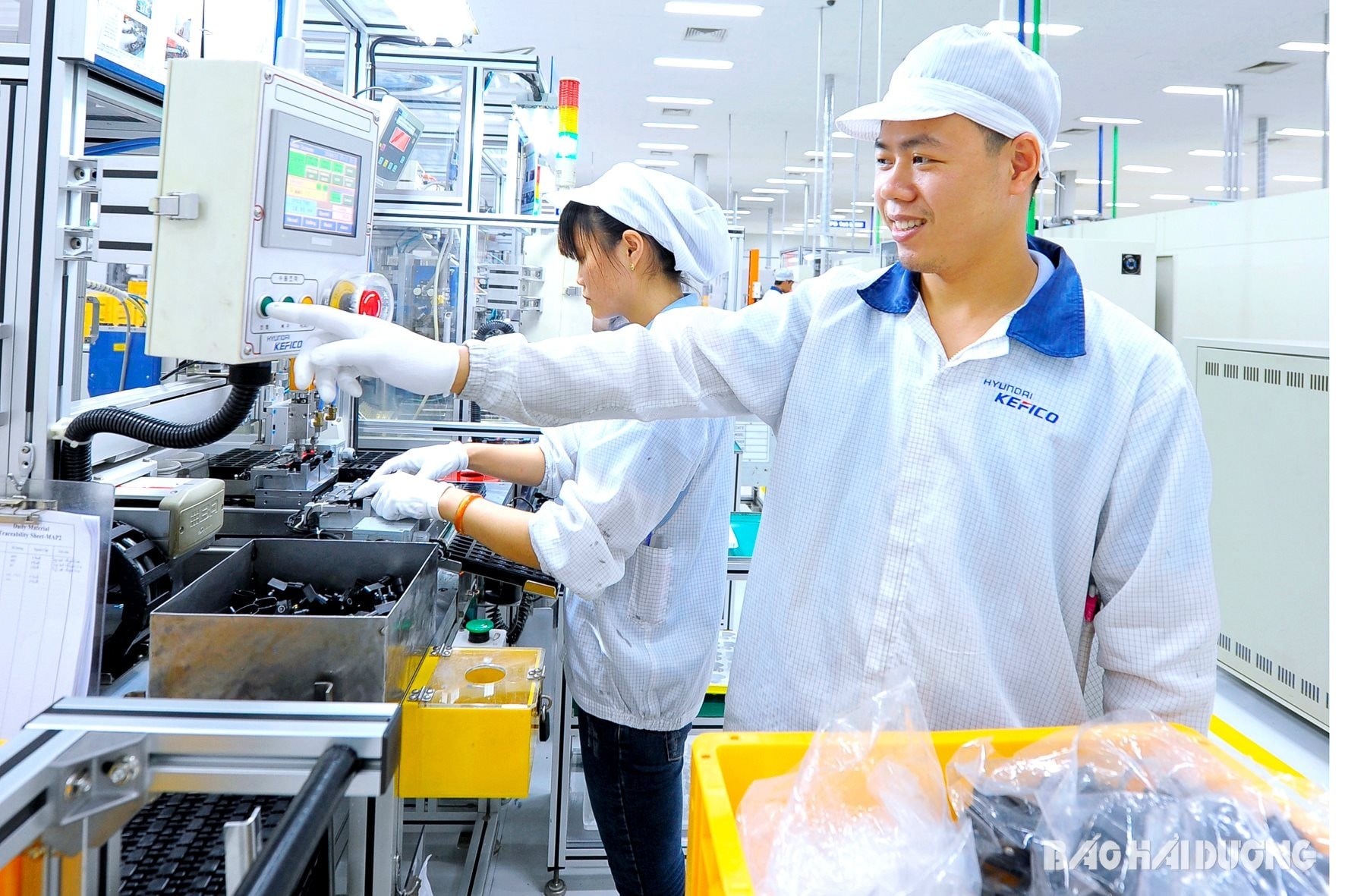US President Donald Trump's announcement that he will impose a tax of up to 46% on imported goods from Vietnam is a big challenge.

The United States is currently Vietnam’s largest export market, accounting for more than 25% of total exports. The imposition of a 46% tax rate will reduce the competitiveness of Vietnamese goods in the US market, leading to a risk of a decline in orders and revenue for export enterprises. The industries most heavily affected are expected to include electronics, textiles, footwear and agriculture. According to economic experts, this tax rate could have “devastating impacts” on many of Vietnam’s production and export sectors.
However, the US's imposition of high tariffs on Vietnamese goods should not be seen as a confrontation or a "trade war" between the two countries, but rather as an inevitable challenge in the context of integration and globalization.
In fact, despite WTO commitments on free trade and non-discrimination against domestic and imported goods, the trend of trade protectionism is an objective reality. It is not uncommon for a country to apply higher tariffs to protect domestic production, especially for countries with large trade deficits like the US. Vietnam, with its increasing export turnover to the US, cannot avoid the supervision and adjustment of trade policies from Washington.
For example, if Vietnam chooses to respond strongly with confrontational measures, such as imposing counter-tariffs or restricting imports from the US, this could damage bilateral trade relations and make the situation worse. Meanwhile, the US is still an important market for Vietnamese goods and losing this market would have a negative impact on economic growth and employment.
Instead of viewing the high tariffs imposed by the US as a mere difficulty or challenge, Vietnam can take advantage of this opportunity to make important changes in its production, export and economic development models. Below are strategic directions that can help the Vietnamese economy adapt and develop more sustainably.
First, shift from simple labor to high-tech, skilled labor. Vietnam still has a large proportion of manufacturing industries that rely on simple labor, especially textiles, footwear, electronics assembly, etc. These industries are vulnerable to trade protection measures and competition with countries with lower labor costs. It is necessary to focus on investing in high technology and automation to increase productivity and reduce dependence on cheap labor. Industries such as semiconductor chip manufacturing, AI technology, electric cars, medical equipment, etc. can be potential areas.
Second, focus on exporting high value-added products. Vietnam currently has a large trade surplus with the US, mainly from low value-added processed and assembled goods. To avoid risks from protectionist policies, it is necessary to shift to exporting products with higher value-added. Invest in branded, innovative and high-quality products instead of focusing only on export volume. For example, instead of only exporting raw coffee, it is necessary to develop high-value processed coffee brands. Take advantage of high-tech industries to shift the export structure to items less affected by high tariffs.
Third, expand and diversify export markets. Vietnam is considered to be dependent on the US with more than 25% of export turnover. When facing tariff barriers, finding alternative markets is necessary. Take advantage of Free Trade Agreements (FTAs) such as EVFTA (EU), RCEP (Asia), CPTPP to increase exports to markets such as the EU, Japan, Korea, Canada, Australia... Invest in emerging markets such as the Middle East, Africa, South America to reduce dependence on the US market. Strengthen economic cooperation in the ASEAN region, taking advantage of the central role in the Asian supply chain.
Fourth, exploit the domestic consumer market of 100 million people. Vietnam has an important advantage that many exporting countries do not have, which is a large domestic market of more than 100 million people. This can be a "pressure relief valve" for businesses if they know how to take advantage of it properly. Strengthen the campaign "Vietnamese people prioritize using Vietnamese goods", improve the quality and brand of domestic goods to compete with imported goods. Develop a modern distribution system, support Vietnamese businesses to reach domestic consumers through e-commerce, supermarkets, and convenience stores. Promote consumption through stimulus packages, tax reductions, and consumer credit support to increase domestic purchasing power.
In addition to self-reliant solutions, continuing negotiations with the US is an important direction to minimize the negative impact of high tariffs. Vietnam can take advantage of the bilateral dialogue mechanism, propose commitments on fair and transparent trade so that the US can consider adjusting tariffs. Demonstrate efforts to improve the supply chain, reduce dependence on raw materials - a factor that can help reduce suspicions of origin fraud. Cooperate with US businesses, take advantage of support from corporations with interests in Vietnam. Use the WTO and trade diplomacy channels to clarify the stance, protect the legitimate rights of Vietnamese goods.
On April 4, General Secretary To Lam had a phone call with US President Donald Trump. Vietnam has proactively expressed its goodwill. Writing on the social network Truth Sociald at noon on April 4, local time, US President Donald Trump said he had just had a "very productive phone call" with General Secretary To Lam.
“He told me that Vietnam would like to reduce tariffs to ZERO if a deal could be made with the United States. I thanked him on behalf of our country and said I look forward to meeting him in person soon,” US President Donald Trump wrote.
This is an important result. At this time, we must open up many directions and have scenarios for situations. In the long term, we must build a self-reliant, prosperous economy, a progressive market economy.
MSc. NGUYEN MANH THANG